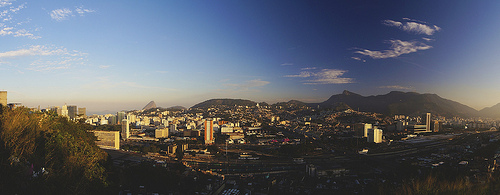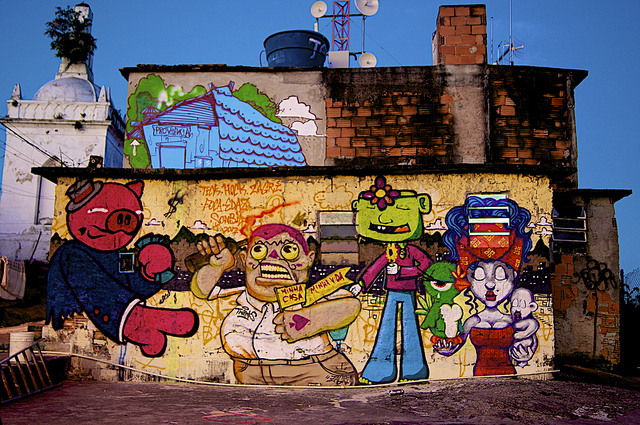 Residents of Morro da Providência, the iconic first favela in Brazilian history to be referred to as such and originally named “Morro da Favela,” are opposed to the changes the government aims to implement in the community in preparation for the 2016 Rio Olympics. One of these changes is a gondola that will carry people to and from the port and main metro station, but to reach each end, the gondola will make a stop at the top of Providência. To make way for this project, many families, including ones not directly in the gondola’s way, were informed they will be evicted and their homes demolished. Residents are being told that the gondola is primarily being constructed as a simplified means of transportation for them, revealing the flaws in the government’s plans.
Residents of Morro da Providência, the iconic first favela in Brazilian history to be referred to as such and originally named “Morro da Favela,” are opposed to the changes the government aims to implement in the community in preparation for the 2016 Rio Olympics. One of these changes is a gondola that will carry people to and from the port and main metro station, but to reach each end, the gondola will make a stop at the top of Providência. To make way for this project, many families, including ones not directly in the gondola’s way, were informed they will be evicted and their homes demolished. Residents are being told that the gondola is primarily being constructed as a simplified means of transportation for them, revealing the flaws in the government’s plans.
Providência is based on a large hill where residents near the base live only minutes away from Rio de Janeiro’s largest metro and train station. The gondola’s purpose is to transport residents more efficiently, but if the residents who live at the top and who would have the most need for the gondola are being evicted then the project’s original raison d’être is gone. Instead, it seems as if the gondola’s true purpose is to make an impression on newly arrived tourists by transporting them to and from major points of access, while allowing them to soak up the spectacular panorama with both Pão de Açucar and Christ the Redeemer in view at the top of the hill. Essentially, the government is catering to foreigners while downplaying the favela and community with the most historical rights. To bring this issue to the forefront and due to the success of previous visual interventions here, I collaborated with residents in the community and throughout the city to create a graffiti mural at the top of Providência.

I was able to secure quite a few homes for the graffiti intervention but I decided to focus on one that has the best view of the city, and unsurprisingly, is also slated for eviction. The younger children who usually fly kites and play games around the area stopped by and wanted to help out, so we armed them each with a paintbrush and let them paint. Other residents around the area showed their support for the intervention by providing tools and supplies they already had.
Once the base of the mural was done, I came back with graffiti cans and started designing the mural, but I realized that I didn’t have the resources to finish it, so I got in touch with all the graffiti contacts I had made during my time in Rio, with the help of graffiti journalist Lu Olivero and local graffiti shop owner Romulo Bustamante. A team of five seasoned carioca graffiti artists called the Wallrider Crew was organized, consisting of Bruno Zagri, Renata Edaz, Leandro Tick , Hugo Hoc, Emanuel Bilson, and Bustamante himself. Their task was to come up with and implement an effective piece reflecting the situation. We decided to reclaim the phrase “My House, My Life” since it is homes in the favela, built over decades and generations, and not ill-conceived public housing, that represent best this sentiment. And with the support and energy of the community behind them, the Crew pulled it off, creating a strong visual statement, as well as illustrating an organic chapter in the favela’s history. The mural, by extension, is also slated for demolition.
